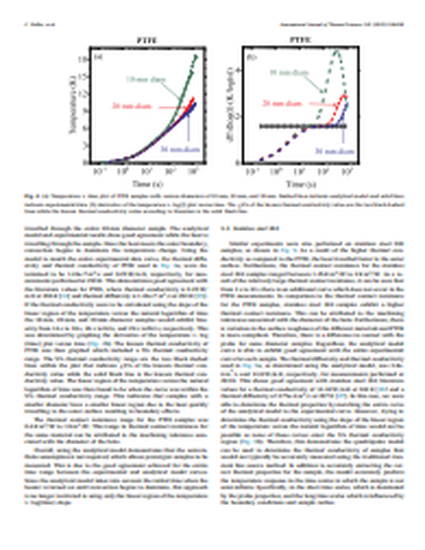
By utilizing an in-pile measurement, thermal conductivity can be determined under prototypic conditions over a range of burnup. In this work we develop a multilayer quadrupoles analytical model to describe the transient thermal interactions between a line heat source (i.e. needle probe) and cylindrical nuclear fuel geometry for inpile thermal conductivity measurements. A finite element analysis of the detailed needle probe geometry was compared to results from the analytical model to verify the assumptions made in the analytical model. Experimentally, the needle probe was used to measure the thermal properties of polytetrafluoroethylene (PTFE) and stainless steel 304 with three different diameters (10 mm, 20 mm, and 30 mm). The analytical model was compared to the experimental measurements, which showed good agreement within an average standard error of 0.501 K. Rather than be restricted to the linear region of the temperature v. log(time) slope, the analytical model can use the entire experimental curve to determine the thermal conductivity of the samples. Using the analytical model, a parameter and sensitivity study was conducted to explore the viability of accurately measuring the sample thermal conductivity under various measurement conditions. In addition, three different parameters were studied for optimization: various UO2 diameters, various probe diameters, and thermal contact resistance. The validated model and results provide the foundation to elucidate a better understanding of in-pile thermal conductivity measurements and informs future needle probe designs to measure samples with diameters as low as 10 mm.
